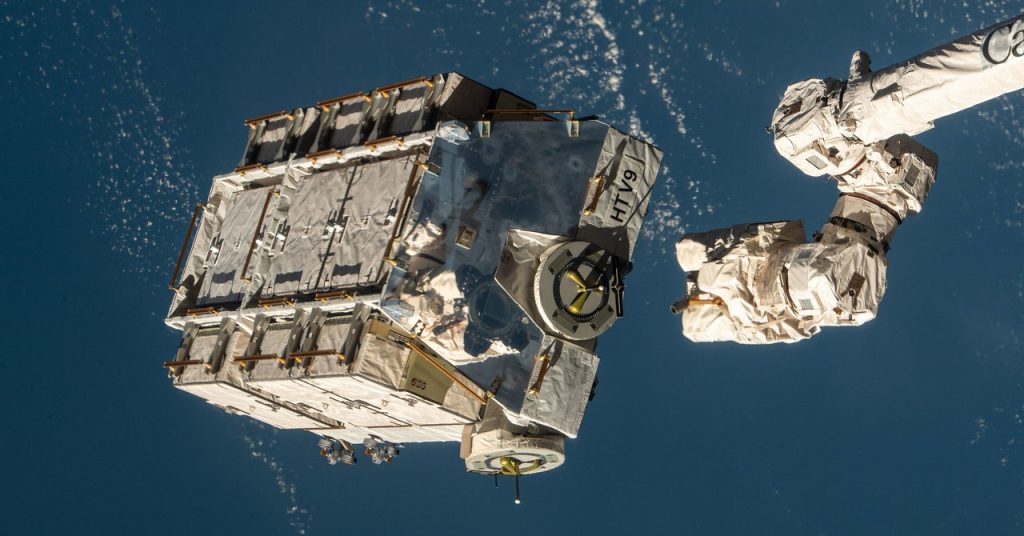NASA Investigates Potential Space Debris Crash in Florida Home
In a surprising turn of events, a nearly 2-pound object believed to have originated from the International Space Station recently crashed through the roof and two floors of Alejandro Otero’s residence in Naples, Florida. Although Otero was not present at the time of the incident, his son was home, and a Nest security camera captured the sound of the impact at 2:34 pm local time on March 8. Remarkably, this timestamp closely aligns with the 2:29 pm EST recorded by US Space Command for the reentry of a piece of space debris from the ISS over the Gulf of Mexico, heading towards southwest Florida.
Previous Incidents of Space Debris Damage
While rare, this is not the first instance of space debris causing damage or injury on Earth. In 1997, Lottie Williams was grazed by a lightweight piece of material linked to the reentry of a Delta II rocket’s upper stage. Fortunately, the air helped slow down the debris, and she escaped unharmed. In 1969, a fragment from a Soviet spacecraft reportedly struck a small Japanese ship near the Siberian coast, injuring five people.
“Spacefaring nations must minimize the risks to people and property on Earth of re-entries of space objects and maximize transparency regarding those operations,” NASA Administrator Bill Nelson said in a 2021 statement following one of the Long March 5B reentries.
The Long March 5B: A Frequent Offender
The Chinese Long March 5B rocket has been a frequent source of uncontrolled debris reentry. Its unique design, which sees the first stage accelerate to orbital velocity without relying on an upper stage, results in a massive core stage weighing around 20 metric tons and measuring approximately 100 feet long and 16 feet wide. With no built-in capability to steer itself back into the atmosphere, the booster comes down without control a few days after each launch. In 2020, wreckage from a Long March 5B damaged a village in the Republic of Côte d’Ivoire, and in 2022, villagers recovered debris from another launch in Borneo, although no damage was reported.
Kosmos 954: A Nuclear-Powered Satellite Incident
One of the most notable incidents of space debris damage occurred in 1978 when Kosmos 954, a nuclear-powered Soviet military satellite, reentered the atmosphere over remote northern Canada. While no one was injured, and no homes were damaged, Canada organized a cleanup effort to recover as much radioactive debris as possible to minimize environmental impacts. The Soviet Union ultimately paid Canada $3 million in Canadian dollars to settle the matter.
Minimizing Risks and Ensuring Transparency
To minimize the risks associated with space debris, companies like SpaceX design their Starlink Internet satellites to burn up on reentry. Most US and European launch companies also plan their missions to bring rocket upper stages back into the atmosphere over the ocean once their missions are complete. SpaceX has even designed trajectories for its Starship test flights to ensure the vehicle can safely reenter the atmosphere until they can demonstrate the ability to deorbit it for a controlled reentry.
As space exploration continues to advance, it is crucial for all spacefaring nations to prioritize the safety of people and property on Earth by minimizing the risks associated with space debris reentry and maintaining transparency in their operations.
This story originally appeared on Ars Technica.

6 Comments
Who said space exploration was all fun and no risk? Florida’s latest souvenir says otherwise!
Oops, Florida just caught a cosmic fastball, and it wasn’t even signed by the astronauts!
Florida headlines just got otherworldly – ISS debris crashing the party!
Well, who ordered the extraterrestrial express delivery down in Florida, huh?
Looks like Florida’s getting space mail now; wonder if they’ll return to sender?
Space flotsam playing knock-knock with a Floridian’s roof; bet they didn’t see that coming!